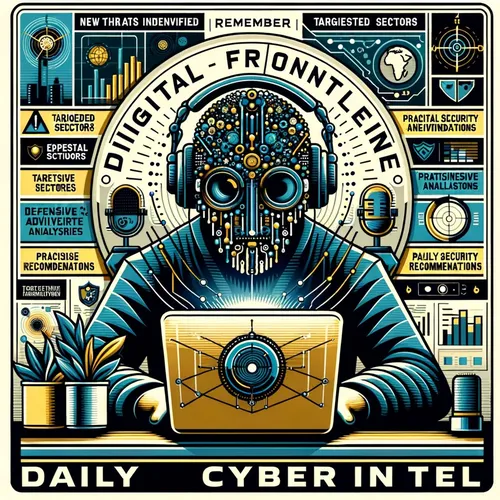China's Cyber Squads Unleashed: Is Your Data Beijing-Bound?
- Author
- Quiet. Please
- Published
- Wed 03 Sep 2025
- Episode Link
- https://www.spreaker.com/episode/china-s-cyber-squads-unleashed-is-your-data-beijing-bound--67622232
This is your Digital Frontline: Daily China Cyber Intel podcast.
It’s Ting on Digital Frontline, where the pixels are hot and the intel is fresh. I know your inbox dings every time a new threat pops up, so let’s cut the fluff and go straight to the battlefield. The last 24 hours have seen no shortage of new cyber mischief swirling straight out of China as Beijing tightens its grip while the curtain closes on its 14th Five-Year Plan. Think of this as the final boss level: China’s cyber squads are aggressively upping their game, angling to burrow deeper into US digital arteries—especially utilities, telecom, transportation, and, yes, even your trusty city government servers.
The National Cyber and Information Security Agency out of Europe just issued a clarion warning today about the rising tide of devices in critical infrastructure sneakily transferring data straight to China, or even—brace yourself—being controlled remotely from the Middle Kingdom. We’re not talking just about hulking servers here; the risk list now features everything from IP cameras to medical devices, smart cars, and even the meters that watch over your power grid. The Czech Republic’s Ministry of Foreign Affairs is still sweeping up the aftereffects of a cyber assault led by the notorious APT31 group—yes, the same crew with deep ties to China’s Ministry of State Security.
Meanwhile, the US telecom sector is getting hammered by a campaign called Salt Typhoon, with more than 200 organizations across 80 countries finding their law enforcement records, call logs, and core configurations pilfered or tampered. The goal isn’t Hollywood-style destruction; it’s patient, strategic access so Beijing can flip the kill switch when the time is right—especially if the Taiwan situation boils over this fall.
Cybersecurity agencies from Washington to Sydney and beyond are sounding the joint alarm on Chinese APT actors launching global, persistent attacks since at least 2021. These aren’t amateurs. Groups like OPERATOR PANDA and GhostEmperor are mixing old-school router hacks with sneaky new twists—AI-enhanced phishing, deepfake videos for influence ops, and supply chain shenanigans that make your procurement officer’s head spin.
Expert tip for security officers and small business heroes: zero-day exploits are the star ingredient this quarter. Hunt for strange outbound traffic, disable risky remote administration features, and double-check where your data ends up. If you’re running backbone routers, ditch the default “cisco/cisco” credentials and audit those config files for surprise guest accounts with admin privileges. Educate your teams: those “update now” messages may as well be honey traps. Cities and universities should assume they’re already on the digital hit list.
Defensive playbook: segment your networks, back up offline, enforce MFA everywhere, and share threat indicators—a move Homeland Republicans are championing to keep detection sharp and collaborative. The game is bigger than chips or market competition. At stake: your trust, your uptime, and your data itself. Washington is debating whether to boost sanctions or out-innovate, but the real question is—are you ready for prime time if China decides to really play?
Thanks for tuning into Digital Frontline with Ting. Fire up those alerts, subscribe for relentless updates, and remember: in cyber, boring is safe but informed is unbeatable. This has been a quiet please production, for more check out quiet please dot ai.
For more http://www.quietplease.ai
Get the best deals https://amzn.to/3ODvOta
